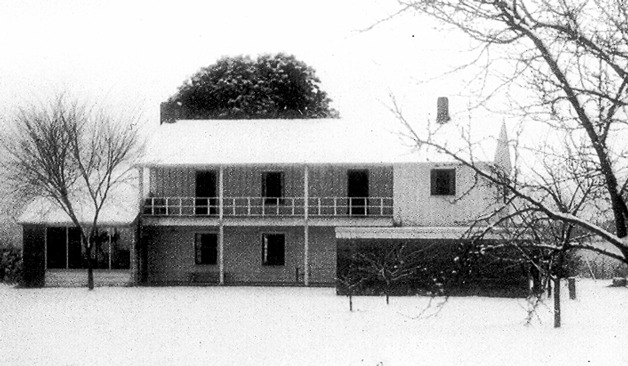Each week in May, the Record will publish a look back at Langley landmarks in a series researched by Linda Beeman, vice chairwoman of the Langley Historic Preservation Commission.
The series is part of the National Trust for Historic Preservation’s seventh annual National Preservation Month.
Neither volcano nor mudslide nor chilly thermostat have failed to dampen the resiliency of a roomy 1940s three-bedroom house on Edgecliff Road in Langley which remains a rich chapter of the city’s medical history.
“It’s a very comfortable spot,” said Dr. Jesse Tapp, the house’s current owner. “We try to get there as often as we can.”
“It’s a great house,” added his wife, Marie. “We’ve had some wonderful weddings and family reunions there.”
According to researcher Linda Beeman of the Langley Historic Preservation Commission, the two-story McRae House along Edgecliff Road was built over seven years beginning in 1940 by J.E. “Ev” McRae and his wife, Laila.
The couple planned to move there after he retired as manager of the University of Washington Book Store in Seattle. Laila McRae was the niece of a Smith College president, and served as a librarian in Langley for years.
The McRaes’ son, Alan, designed the house, centering it on three waterfront lots on the bluff overlooking Saratoga Passage.
The McRaes planned it as both a residence and a conference and planning center for UW faculty and students.
“Our chief interest is young people and their welfare,” Ev McRae, according to Beeman, reportedly said at the time. “We wish to devote our time to this work.”
The McRaes moved in in 1947 and immediately began hosting events for UW students. Guestbook entries list local luminaries such as Bill Gates Sr., his future wife Mary Maxwell, future Seattle City Councilman Wing Luke and future Senator and Secretary of Transportation Brock Adams.
In addition to discussing University plans, guests got to know each other by playing bridge, crabbing, dancing and singing around evening campfires.
Ev McRae died in 1952, and Dr. Donald Purdy and his wife Gwen bought the house in 1954. Originally from Southern California, Purdy completed his medical training at UW, then accepted a temporary position in a local Langley medical practice.
When the doctor he replaced decided not to return to Whidbey, his interim assignment stretched into a 20-year career.
Purdy was one of three physicians serving South Whidbey’s 4,000 residents in the 1950s. There was no hospital on the South End, and locals remember him making house calls in the middle of the night, searching out mailbox numbers on dirt back roads with a spotlight he’d mounted on his car.
Gwen Purdy enjoyed painting in the studio she’d created over the garage. One of her works — the landscape of the Cascade Mountains displayed along Cascade Avenue — is familiar to Langley residents and visitors.
In the mid-1970s, the Purdys moved to Georgia. They sold the house to Roberta Sawyer and Dale Elliott, who had come from California and who purchased the Star Store from Vic Primavera.
“It had good views and it was a nice house,” Sawyer said. “It was big. It was a house. I’m not sure what more there is to say.”
Elliott, an architect now living in Freeland, remembers the Sunday in 1980 when Mount St. Helens erupted.
“For some reason sound really travels to Langley,” Elliott said.
“The house really shook, three times. It was kind of startling,” he said.
Elliott also remembers the time about 15 feet of Edgecliff bank 35 feet from the house slid to the beach below.
“We lost a pretty big chunk of it,” he said. “That was pretty exciting. But it was pretty stable after that.”
As for the thermostat, he added: “It was a very cold house.”
The Tapps, now retired, bought the house in 1988 and continue to use it as a second home, splitting time between Langley and Seattle.
Their daughter, Delia, lives full-time in the apartment above the garage.
Jesse Tapp credits the large Madrona tree with helping to keep the rest of the bluff in place.
The Tapps said they planned to keep the house in the family.
“We have five children,” Marie Tapp said, “and they all have their eye on it.”



